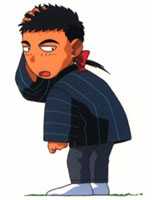
Editor's Comment (and other ramblings) to issue 2
Melbourne Anime Society (MAS)
Laws of Anime (updated)
Membership survey results
Legality of Copying Anime
Mailbag (Member's feedback - (the
place to praise/whine/abuse,as recommended by psychologist)
How to draw: Anime/Manga style
(first in a series)
Positions Vacant
Review 2 - El Hazard: The Magnificent
World
Screening Schedule
Glossary
.............
SAC Newsletter Issue #1
Editors comments to first issue
Anime and Manga - a definition
Anime FAQs
The Anime fandom by species
- or the stereotypical otaku
Review 1: Macross Plus
Anime & Manga Links

Talking about awareness of the SAC existence, I have appointed a publicity officer, Eric Go. He will be responsible for producing future flyers, registration & survey forms, and posters, amongst other (yet undetermined) duties – much like the rest of the staff & executive board <g>.
Recently I was in communique with the Japanese Society, and their president said they would be interested in attending the subtitled (ie Japanese dialogue) titles. The Japanese Society is a course based society, with about 100 members. If even half decide to become SAC members too, it would greatly boaster (ie inflate <g>) our membership numbers, and being a course based society, it would almost guarantee a steady influx of members each year. This would be a windfall for both societies. The SAC can provide regular screenings of interesting Japanese dialogue, while the Japanese society can provide SAC members information about the Japanese culture and context, of some of the anime to SAC members.
Semester 2 screening times will be sketchy in the first several weeks, so please refer to the C&S notice board for updates, and I will try to keep members notified via email. Over the holidays, I will be working with Kle Miller, and Shaun Hately to produce our own SAC website (see 'position vacant'. Other happenings as the year progresses include, fund raising to get better equipment, and perhaps making arrangements for group outings to the Melbourne Film Festival (last year they showed to anime master piece movies) – but if you have any suggestions, comments, request (for screening titles), sympathy, or offerings, sacrifices, don't hesitate to give me an email., as contributors to help the running of the SAC services would be appreciated.
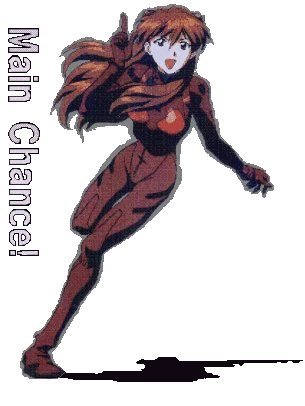
For more about the MAS, follow this link to
their homepage or this one to the ![]() MAS
Main Index
MAS
Main Index
----
For members who are unable to attend our regular on campus screenings, or who wish to see more current anime titles, and wish to borrow tapes – please make your way to Monash on the designated dates, on the designated times, sit down, ensure your seat is in the upright position and ... (thank you for flying anime airlines ;)
For more information about the MAS and its screening schedule, please check out their website by following this link.
The Laws of Anime is a growing list of physical, universal, and natural phenomenon that seem to appear in various forms in all sorts of anime. The original intent was an effort to classify these incidents into a list of "laws" that explained how Anime physics are different from our own (real?) world. Due to the rather dynamic nature of Anime Science, theories and paradigms are generally in a state of constant flux, often shifting or changing with the tide of whimsy. By no means all-inclusive and sometimes not even remotely instructive, the following is an enumerated list of semi-empirical islands in an ocean of conjecture. It is our hope that you find them useful to studying Anime, or at the very least, worth a good chuckle.
1. Law of Metaphysical Irregularity
The normal laws of physics do not apply.
2. Law of Differentiated Gravitation
Whenever someone or something jumps, is thrown, or otherwise is rendered
airborne, gravity is reduced by a factor of four.
3. Law of Sonic Amplification,
- First Law of Anime Acoustics
In space, loud sounds, like explosions, are even louder because there
is no air to get in the way.
4. Law of Constant Thrust,
- First Law of Anime Motion
In space, constant thrust equals constant velocity.
5. Law of Mechanical Mobility,
- Second Law of Anime Motion
The larger a mechanical device is, the faster it moves. Armoured Mecha
are the fastest objects known to human science.
6. Law of Temporal Viability
Time is not a constant. It stops for the hero whenever he does
something "cool" or "impressive". Time slows down when friends or lovers
are being killed, and speeds up for a fight.

7. First Law of Temporal Mortality
"Good guys" and "Bad guys" die in one of two ways. Either so quick
they don't see it coming, OR it's a long drawn-out affair where the character
gains much insight to the workings of society, human existance, or why
the toast always lands butter-side down.
8. Second Law of Temporal Mortality
It takes some time for bad guys to die... regardless of physical damage.
Even when the 'Bad Guys' are killed so quickly they didn't even see it
coming, it takes them a while to realise they are dead. This is attributed
to the belief that being evil damages the Reality Lobe of the brain.
9. Law of Dramatic Emphasis
Scenes involving extreme amounts of action are depicted with either
still-frames or black screens with a slash of bright color (usually red
or white).
10. Law of Dramatic Multiplicity
Scenes that only happen once, for instance, a 'Good Guy' kicks the
'Bad Guy' in the face, are seen at least three times from three different
angles.
|
|
|
Example titles showing or shown already this year. | Other (notable) examples |
| 67 | Action/Adventure | Macross Plus, Armitage, | Venus Wars |
| 56 | Martial Arts | Fatal Fury | The Hakkenden |
| 51 | Science Fiction | Detonator Orgun, Gunbuster | Gundam 0083, Kishin Corps |
| 44 | Fantasy | El Hazard, Bastard | Slayers, Record of Lodoss War |
| 43 | Comedy | Cat Girl Nuku Nuku , Dragon Half, | Tenchi Muyo, Ranma ½ |
| 18 | Intrigue | Wicked City | Patlabor: The Movie, Key |
| 15 | Drama | Patlabor | Maison Ikkoku |
| 12 | Master Theatre | Pon Poko (Tanuki Wars), My Neighbour Totoro | Nausicaa, Laputa |
| 11 | Cute | Miyuki Chan in Wonderland | Moldiver, Megami Paradise |
|
|
What Member Would Like to Know | Progress, in fulfilling the Requests |
| 54 | Reviews | Macross Plus in the first newsletter |
| 49 | How Anime/Manga are made | Serialisation started this issue |
| 35 | Cultural background | Up coming in future newsletters |
| 22 | What Other Fans Like/Dislike | See the survey above |
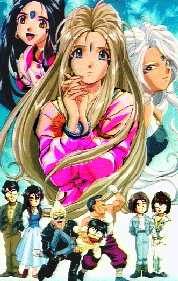
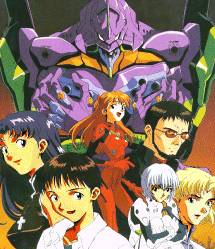
Most members are familiar with anime such as Akira, Macross (aka Robotech)
or Street Fighter II, most were not familiar with the artist’s names, such
as Hayao Miyazaki, Rumiko Takahashi, or titles with less publicity, like
"Ah! My Goddess", "Visions of Escaflowne", etc. Although
many were familiar with series that are highly popular overseas, particularly
in Asia, notably Neon Genesis Evangelion, and Gundam.
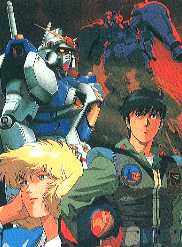
However this have not stopped the proliferation of "fan subtitlers" who feed the fan market with subtitled anime. These fan subtitlers and their distributors, are your typical anime fan, with perhaps a not so typical obsession, who translate, subtitled (with some computer hardware), and distribute anime throughout the world.
Their range of release titles are varied, but usually consist of titles that are unlikely to be picked up by Western companies. Exceptions to this rule is demand by fans for popular titles. However once titles are commercially released in English, fan-subtitlers and distributors will customarily withdraw them from circulation, but this does not stop anyone from copying tapes that are already out there. So where does this leave the copyright holders?
There are several arguments in support of fan subtitling.
To Editor,
Hello, just a congratulations on getting the club started. I was praying
someone would start one up. Like yourself I am a crazy anime fan, and was
just wondering what your preferences are. Do you like subbed, or dubbed?
What are your favourites? Anyway I know your busy, so I better go. Again
great job and keep it up!!!
How many members are there in the club? ... do we do anything else besides screening anime at Swin?
Suggestions for the newsletter or screenings are welcomed - via email
or drop in a letter at the SAASC.
(see also ‘Positions Vacant’.)
Hello!
As a loyal fan of anime for a long time, I just want to know if there
is anything I can do for the club? I think it is terrific to have our own
anime club in Swinburne! By the way just want to let you know that the
screening time is not suitable for me, and I am considering skipping lectures
to see them (even so I have already seen Macross Plus, which I fell
in love with).
Now skipping classes probably isn't a good idea ...usually ;) Each
one of us knows what is best for ourselves, from which we should then act
accordingly.
I believe that you have forgotten to include me into your mailing list since I am a member. I got the email via another club member. Please remember to include me in your mailing list next time. Thank you.

Part I) The Head
Parts II–III) The Body
Part IV) The Hip
Parts V–VII) The Legs
Part VIII) The Feet
How come I am taking the proportion first? Because if you can not control
the proportion of the character, the figure may become strange. So be careful!!
Well, this time I will stop here. This drawing skill is just for reference.
When you do draw something, remember different people have different tastes.
If you have any questions about drawing, please email me at kolin_ioc@hotmail.com.
See you next time!!!

[Ed – Here is a ‘Super Deformed’ sketch of Chun-Li from Street Fighter
II. Notice the shortened proportion in this form. (Picture from the Internet,
artist unknown. Follow this link for a definition
of SD which appeared in Newsletter #1

Web Site Authors
Yes! Our dynamic team of anime ‘enthusiast’ requires wondering soul
or souls, with too much free time to build a brain scattering, mind numbing
web page for the SAC and the greater good of anime. [NOTE: What you are
reading now is not the permanent website.] The site will include
info about the SAC, the SAC Newsletter (in colour and stereo hyper-linked),
showcase our member’s talents (or lack of), as well as page links and maybe
a banner, and what ever else that was not put in the trash…
Technically, this OVA production is first rate. While not like (MHO) the brilliant ‘Macross Plus’, ‘El Hazard’ is on par for excellent entertainment value. The animation is fluid, smooth & crisp. The rendering of the characters are done well to express their characters, and the music is also very good (I especially like the opening score). The dub is one of the best avalible (IMHO), however the SAC will be screening the first 6 parts subtitled.
I have thus far intentionally neglected to describe the plot or the characters themselves, as I feel this title deserved to be seen (in its entirety) and to be enjoyed. While ‘Macross Plus’ gave viewers a sense of a "Hey! Cool!" factor, ‘El Hazard’ leaves the audience with a "Hey, that was fun" kinda feeling.
After this 8 part OVA, a 28 episode TV series was made which more or less had an overall plot as the OVA, but with some distinct differences. Then a second OVA series was produced and is currently being released in English, along with the English release of the TV series.
| Date | Time | Title |
| Week 1 | TBA | El Hazard (OAV 1-2)
Armitage III (OAV 1-2) |
| Week 2 | TBA | El Hazard (OAV 3-4)
Armitage III (OAV 1-2) |
| Week 3 | TBA | El Hazard (OAV 5-6)
Gunbuster (OAV 1-2) |
| Week 4 | TBA | El Hazard (OVA 7-8)
Gunbuster (OAV 3) |
| Week 5 | TBA | Pon-Poko / Tanuki Wars (movie) |
| Week 6 | TBA | Patlabor (OAV 1-2)
Bastard! (OAV 1-2) |
| Week 7 | TBA | Patlabor (OAV 3-4)
Bastard! (OAV 3-4) |
| Week 8 | TBA | Patlabor (OAV 5-6)
Bastard! (OAV 5-6) |
| Week 9 | TBA | Patlabor (Movie) |
| Week 10 | TBA | Dominion Tank Police (OAV 1-2) |
| Week 11 | TBA | Dominion Tank Police (OAV 3-4) |
| Week 12 | TBA | Dominion Tank Police (OAV 5-6) |
| Week 13 | TBA | My Neighbour Totoro |
AMG
"Ah My Goddess" a popular romance fantasy manga, then animated into
an OVA, and soon to be movie, by Kozuke Fujisima.

BGC
"Bubble Gum Crisis", a popular sci-fic OVA series. The name is a slang
for a situation which is ready to blow up at any time.
Dubbing
Translating an anime film into another language, using voice actors
to provide the voices in that language.
Dubbing
Copying video/audio tapes. Dubbing anime tapes for purposes other
than having a backup copy is illegal according to the US and Japanese copyright
laws. (see 'Legality of Copying Anime')
Eyecatches
The short animation sequence in TV anime that announces to the viewer
that there is a commercial break and when the commercial break is over.
They've proven so popular that recent OAVs have them also, even though
there is really no need for them.
Fan Service
Something that is done specifically to appeal to the male fans of an
anime. Usually involves nubile young females, either nude or in poses
wich accentuate their shapely bodies, etc, etc...

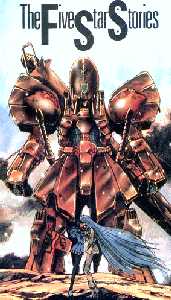
Garage Kit
See ‘Model Kit’.
Hentai
Japanese for pervert. (RIGHT - Also ses ‘Fan Service’ and ‘H’)
What is "H"?
The 8th letter of the alphabet? Seriously, "H" (echi/ecchi) is
a Japanese slang term for "perverted." It derives from the
letter H, which is the first roman letter in the American spelling of "hentai",
which is the Japanese word for "perverted" - more or less. (ABOVE)
KOR
"Kimagure Orange Road", a popular romance comedy manga, by Izumi Matsumoto.
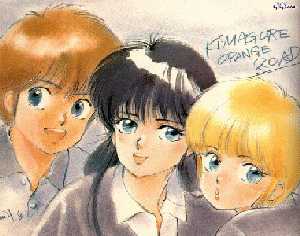
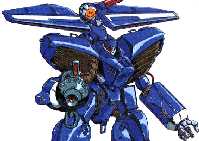
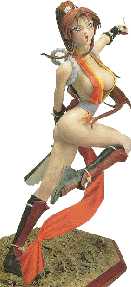 Model
kit
Model
kit
Scale model. The most popular varieties of these are:
OAV
Original Animation Video. An anime feature released directly
to video without a previous theatrical or broadcast release. Made
for video productions. The US equivalent would be "made-for-video".
In terms of quality, theatrical movies are usually the best, followed by
OAVs, and network TV shows at the end. Also known as OVA (Original
Video Animation).
OVA
Original Video Animation. (see OAV)
Otaku
1. Original meaning: Your house (company, organisation, etc), used
as a polite form of the second person => you.
2. Meaning in early-late 1980's: An extreme fan of anime/manga/sf who
lacks communications with other people and
usually untidy => nerd, fanboy. (This) has VERY negative meaning.
3. Current Usage: Anyone obsessed or overly interested with any subject.
EG Car otaku, Gun Otaku, etc... => mania,
freak. (This) still carries negative meaning, unless used between otakus,
of course. :-) So use "otaku" to only other anime
fans.

Shojo
Young Girl, commonly use to describe manga with a particular styles
that were targeted for young girls.
Shonen
Young Boy, commonly use to describe manga with a particular styles
that were targeted for young boys.
UY
"Urusei Yatsura", a popular sci-fi romance comedy manga, by Rumiko
Takahashi. 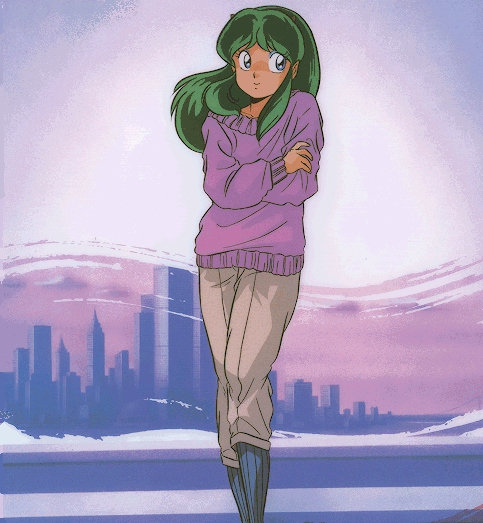
All material contained in this publication is subjected
to Copyright and remains the property of Swinburne Anime Club (SAC), unless
otherwise stated.
Reproduction of the contents of this publication, in
whole or in part, will require written approval from the SAC Executive
Board.
All images are copyrighted by their respective copyright
holders. Copyright 1998
Chief Editor: Choy Hardisty
Section Editor: Bao An Phung
Publicity Officer: Eric Go
Publisher: SAC Executive Board (people to blame/praise
... I prefer praise ;)
President
Choy Hardisty <091647@swin.edu.au>
Vice President Yukiko Kagura
<kolin_ioc@hotmail,com>
Secretary
Morgan Cockerell <091525@swin.edu.au>
Treasurer
Matthew Lee
<091750@swin.edu.au>
Copyright 1998.
Welcome to the first issue of the official SAC newsletter. Hopefully all members have received a welcome email detailing the aims of the SAC. If not, don't despair, a copy can be made available upon request -- least you not know what you signed up for ;)
 Members
are encouraged to contribute to this newsletter, such as submitting request
for screening titles, question, anime reviews, comments and critique (of
the SAC, anime or manga).
Members
are encouraged to contribute to this newsletter, such as submitting request
for screening titles, question, anime reviews, comments and critique (of
the SAC, anime or manga).
Screenings.
The SAC will try to show titles most people have not seen such as Wings
of Honneamise (Science Fiction, philosophical), Venus Wars (Science
Fiction, Action/Adventure), Dragon Half (Fantasy, Comedy), etc...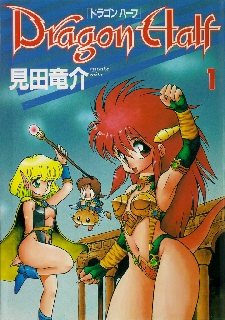
Our selection criteria is based from the Registration & Survey, where members were asked for their preferred genre and their general knowledge of anime. Suggestions are always welcomed, particularly if you can provide the video ;) The length, time, and date of the screening sessions are also prepared from the Registration & Survey forms, where we asked each member for their preferred times. The schedule presented are the times most members are able to attend. However if you are unable to attend one screening, then hopefully you can attend the other screening (see the Schedule at the back), which will mostly have the identical titles showing.
The reason for this, is so members can attempt to see one screening per week, because many of the titles have continuous episodes, where missing an episode would screw up your understanding of the plot, or worse, you might miss some great moments!
I realise the screening schedule will not please everybody, even with two identical sessions per week -- but we live by a majority rule (and if you don't like it TOUGH, or go create a utopia of IMAX theatres, AC-3 surround sound, leather recliners and full service androids that tend to your EVERY need, and we'll watch anime there ;)
It is not easy to establish a screening schedule, just look at your own course timetables! So if you have constructive comments on how the SAC can provide a better service -- great, I look forward to them. If you want ta whinge, whine, flame, abuse, threaten, make sacrificial voodoo dolls, plan world domination or all the above -- I don't need to know about them.
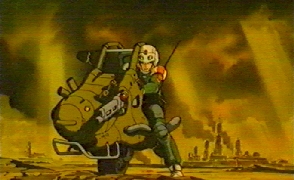
Manga
1. Pronunciation - I'm not your English teacher ;)

3. In Japan these 'manga' or comics are usually in black & white with shading, rather than in colour.
4. Literal Japanese translation -- irresponsible pictures
Anime
1. From the Japanese 'bastardisation' of ANIMAtion. Don't know
why they had it ending in 'e' -- possible because the pronunciation of
'a' is very similar to 'ee' in English???
2. This properly denotes moving animated sequence of pictures made to be shown on a screen TV, or monitor. They are almost always colour (unless you still have a black & white TV :)
There are two main reason why these two terms are so often confused with each other.
1. Most anime are derived from manga. Often when a manga title is popular enough it will be made into an anime for either TV showing, sold direct to the home video market, or made into a feature film. This is not to say all anime are derived from manga, but a majority. In fact there are many original anime titles, some original animes even have mangas written/drawn after them -- like the novels of Hollywood films which they are based.
2. The company, Manga Entertainment, who is a major distributor of English subtitled & dubbed animes, uses the Japanese characters for 'manga' as their logo. Thus the anime videos have the words 'manga' on them.
Editorial opinion:
Manga Entertainment, aka 'ME' have even tried to trademark (or copyright)
these characters -- which IMO is like what Microsoft tried to do by copywriting
the word 'windows'. (and yes I did intend the 'ME' acronym as a pun here,
but you derive the, if any, social commentary ;)
What is the history behind Robotech and its component shows?
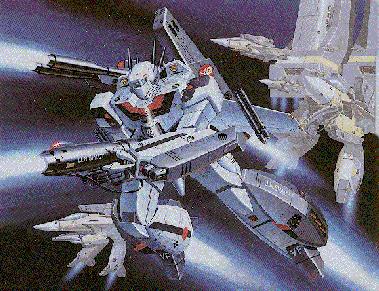
After Macross ended in 1983, Tokyo Movie Shinsha's Super Dimension Century Orguss took its place on the air waves. Orguss shared some common creators with, and had a few in-joke references to Macross. Beyond that, there was no relation. When Orguss finished its run of episodes, another "Super Dimension" show took its place: Super Dimension Cavalry Southern Cross.
This is also in 1983. Bear in mind that these "Super Dimension" shows had little in common save the title. They were not related in any way, save for the brief references in Orguss mentioned above.
Megazone 23, one of the first OVAs (Original Video Animation), was released in 1984. It had the same character designer as Macross and Orguss, one Haruhiko Mikimoto. On television, a short-lived series by name of Genesis Climber MOSPEDA came and went. Theatrically, the Macross movie was released, its title, Macross: Oboete Imasu Ka has been translated as Macross: Love, Do You Remember? or Macross: Do You Remember Love. The Macross movie was more of a retelling of the Macross series, rather than a sequel.

Let's wander over to North America. Sometime around mid to late 1984, the rights to the Macross series were acquired by Harmony Gold. Originally, Macross was slated to be translated rather faithfully, and a TV-movie compilation of the first three episodes had been broadcast.
Now things get a little murky. Sometime around 1985-1986, back in Japan, Shogakukan commissioned an English translation of the Macross movie, which was then titled Super Space Fortress Macross. Also, Megazone 23: Part II was released on video.
In 1986, Macross Flashback: 2012, a 30-minute OAV, was released in Japan. This was 22 minutes of scenes from the Macross series and movie, as well as images from various Macross publications, edited to accompany music from the series, plus eight minutes of new animation, showing some footage previously cut from the movie, as well as a showing what happened to our heroes after the war.

Back in the US, Harmony Gold was riding the crest of Robotech's popularity, and had started production on Robotech II: The Sentinels and a Robotech movie. Sentinels was to be a brand-new series of 65 episodes, written in North America and animated in Japan, for North American broadcast. For a variety of reasons, this was never completed, and as a consequence never released on television. The Robotech movie was a re-edited Megazone 23, combined with footage from Southern Cross, plus a 12-minute happy ending, comprised of new animation commissioned from Japan.
The movie was barely released (a few test screenings and a showing at the Los Angeles Animation Celebration) before vanishing from the big screen altogether.
Back to Japan - Megazone 23: Part II is translated to English
with Japanese subtitles, for use as a Japanese teaching aid. The 12 minutes
of new footage for the Robotech movie is included on this video,
which was released as Megazone 23: Part II, Foreign Edition.
A quick hop back to North America -- in 1987, Super Space Fortress
Macross (movie) makes it to North American shores, minus 18 minutes
of footage -- as Clash of the Bionoids. (The English dub of Clash
of the Bionoids was horrendous, and should be avoided like the plague.
However a subtitled edition was later produced.)
In 1992, Macross II - a sequel to the Macross movie -- is released nearly simultaneously in Japan and the United States.
(Then came the TV series Macross, and its OVAs and Movie. Which was released almost simultaneously as the four part OVA series and movie, Macross Plus - see our in house review in this issue)
2. Meaning in early-late 1980's: An extreme fan of anime/manga/sf who lacks communications with other people and usually untidy => nerd, fanboy. (This) has VERY negative meaning.
3. Current Usage: Anyone obsessed or overly interested with any subject. EG Car otaku, Gun Otaku, etc... => mania, freak. (This) still carries negative meaning, unless used between otakus, of course. :-) So use "otaku" to only other anime fans.
NOTE: On the net, Otaku is usually refereed to a big fan of anime and/or manga. For example, I'm an Otaku. :-)
That practice is known as "Super-Deforming" (or SD) characters. It's a way of making even the most horrible monster into something small and cute (as well as harmless -- at least for the moment). As far as I know, the first occurrence of this was in SD-Gundam. Nowadays, Super-Deformed characters are appearing EVERYWHERE.
--- From a post by Alan Takahashi


What does it mean when a large drop of water appears on an anime
character's head?

That is a big drop of sweat, showing that the person is embarrassed
or is worried about something.
What is this Sailor Moon Thing, Anyhow?
Sailor Moon is a Bandai television series initially aimed at 14 year-old girls. The main characters are Tsukino Usagi, Mizuno Ami and Hino Rei. Usagi is a ditzy blonde with looong ponytails and was the first of the girls to become a "se-ra- fuku bishojo senshi", or sailor-suited cute girl warrior. At this point the character designs/costumes began picking up male fans (surprise! surprise! - see image right). Ami and Rei joined the team in episodes 8 and 10, respectively. Kino Makoto joined the group at episode 25.
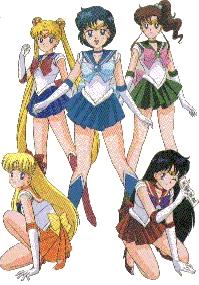
Ami becomes Sailor Mercury, Rei becomes Sailor Mars and Makoto becomes as Sailor Jupiter.
The girls gain special attack powers that derive from the kanji (one of the Japanese language forms) that spell the planet their name represents, their real names are spelled with the same kanji, by no coincidence. Thus, Tsuki-no Usagi is Sailor Moon and throws her crescent-shaped tiara, which glows and acts like a killer frisbee. Sailor Mercury (Mizuno Ami) can hurl bubbles of fog to confuse and disorient. Sailor Mars (Hi-no Rei) throws fireballs. Sailor Jupiter (Ki-no Makoto) Lightning. She calls it "Supreme Thunder". She uses a deadly whirlwind of roses in the manga.
The series is campy and parodies many different series. One episode even has the team visiting an animation studio. I think most of its appeal is in its humour and its cult-like following. Great anime it isn't. Great fun it is.
-- From a posting by Chris Swea with corrections by Robert DeLoura
Addendum: Sailor Moon (aka. Serena) has made her American debut on American
TV (and hence Australian TV - Channel 7).
The Complete Addict (Watchus Anythingus)
So addicted to anime, they just have to have more, more, more!!! Whether
it's subbed, dubbed, raw, shojo, mecha, tentacles, you name it, as long
as it's anime, this person will eventually watch it. Habitat usually is
camouflaged with hundreds of video tapes.
The Old Fogey (Fogeus Fanus)
"Back in my day, we had to walk buck naked through 40 miles of snow
to the post office so we could mail off out SASE tapes. And we didn't get
no master copies, everything was sixth-generation in an electrical storm.
That's the way it was, and we liked it!"
The Arrogant Fanboy (Upus yours)
Sometimes a subspecies of the Old Fogey: "I've been in fandom since
before you knew what a subtitle was, so shut up.
The Old Guard (Classicus Devotius)
Not to be confused with the Old Fogey, this person is still firmly
devoted to animes that have been out a long time. Favourite titles include
Kimagure Orange Road (KOR), Maison lkkoku (MI), Urusei Yatsura (UY,
aka Lum), Star Blazers/Yamato, Project A-ko, etc.
The Seinen Disciple (Enjoyus Plotus)
Likes "realistic" anime with historical settings and backgrounds, intricate
plots, and deep character interactions. Preferred titles include Legend
of the Galactic Heroes and Rose of Versailles. Also tends to
disdain "mass appeal" animes such as Ranma, Tenchi Muyo, Ah! My Goddess
(AMG), etc.
The Party Liners (Postus-the-Mostus)
Enjoys anime, but is also in it for the social interaction with other
fans. Most likely to start off-topic threads and continue threads that
should have died a while ago. Often leads their newsgroups in number of
articles posted. Examples include the Zoebob faction on alt.fan.sailor-moon
and, well, you know who these guys are on r.a.a.m (rec.arts.anime.misc).
The Anti-Commercialists (Vizus Hatus, or Mangus Suckus)
This fan thinks that U.S. commercial anime companies are a threat or
doing a disservice to anime fandom, and therefore are evil and should be
eradicated from the face of the earth. Often found coexisting with the
Arrogant Fanboy or the Old Fogey.
The Clueless Newbie (???)
Common habitat is any of the rec.arts.anime.* newsgroup, usually posting
a question that's already in the FAQ. Can be slightly annoying, but usually
will evolve into one of the other species.
The Stormtrooper (Goddess Worshippus)
Name taken from the "Supreme Council of Lum's Stormtroopers" in UY
(Urusei Yatsura), the Stormtrooper is absolutely and completely devoted
to his/her favourite character/anime. To say something even remotely negative,
or even remotely questioning the status of the trooper's worshipped character
or anime at the best of all time, is to invite a major flame war.
The Babe-fan (Babeus Maximus)
Much like the Stormtrooper, they tend to watch anime for "the kick-ass
babes, man!" Tend to be Tenchi Muyo or Ranma fans...but can
like anything from El-Hazard to Iczelion. Yes, I've met a
few at the local video nights. Kinda shallow. Also tend to display their
anime T-shirts with the babe of their choice -- prominently.
The Manga Enthusiast (Readus-the Mangus!)
Is never satisfied with an anime adaptation of his/her favourite magna.
* Additions by readers are welcomed and encouraged!
Story wise, this is not an action packed 'shoot-em up', but what there is, is riveting. Realistic, fast, and ferrous aerial combat, mecha hand to hand combat, crumbling cities, plenty of spent cartridges and missiles galore (especially in the last episode)
There is aplenty of interpersonal relationship affairs, as in the tradition of the original Macross series. The story centres on the relationship of three former childhood friends, who went their separate ways after a traumatic experience.
After seven years apart, they meet again -- one as the manager of a popular robotic idol singer, the other two test pilots for competing companies for the military's new generation of fighters.

Viewers should be advised that, the story was written during the media
focus on the US's ATF (Advanced Tactical Fighter) 'fly-off' program where
the YF-22 was selected as the US next generation superiority fighter.
Similarly in the Macross Plus story, there is a 'fly-off' competition
between two rival prototype fighters, flown by
two pilots who must confront their past differences, and the success
of their respective companies. But does the military have ulterior motives?
And what does the project have to do with the robotic idol singer?
Macross Plus was released as a four-part OVA series of approximately 40 minutes each. Then a movie edition was made from re-editing the series, combined together with about 10 minutes of new animation.